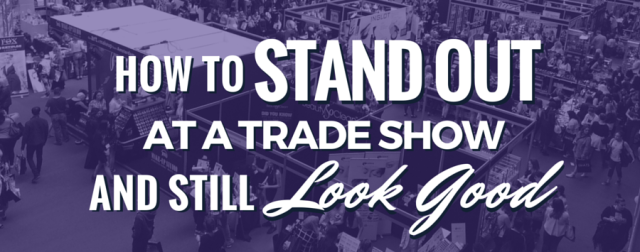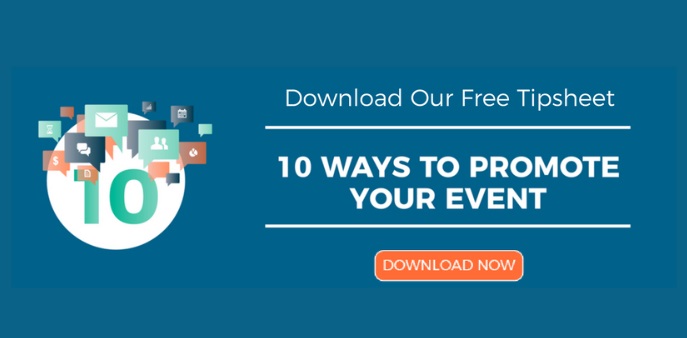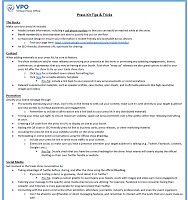
Originally posted on PR Newswire’s Beyond PR blog: http://www.prnewswire.com/blog/visual-strategy-tips-for-trade-show-exhibitors-15823.html
When planning to exhibit at a trade show, it’s easy to get drawn to flashy lights, big booth displays, Inflatable Wacky Waving Tube Men, and DIY design tools. After all, you want to stand out from the other exhibitors and attract a large crowd of interested prospects to your booth.
Getting caught up in the glitz and glamour without thinking about visual consistency, however, could hurt your brand.
According to Jamie Heckler, PR Newswire’s senior creative manager, visual consistency sets an expectation from the brand and helps build trust.
“By following your brand style guide, you are assured that your visual messaging remains on target with the values your brand wants to portray,” says Jamie.
In her blog post Increase Your Thought Leadership’s Credibility with Visuals, Jamie explains the importance of adhering to a visual strategy.
Because today’s audiences expect all content to contain visuals, she writes, “they will likely be savvier than other generations in spotting a better quality visual, and the level of confidence they assign to your visuals will directly relate to the level of skill that went into production.”
So how can a company draw attendees to their booth, but still remain true to—and visually consistent with—their brand?
Follow these five tips to ensure your brand presence is successful and genuine.
1. Align your design strategy with your overall trade show goal.
The first thing you should do when planning for a trade show is to start with a campaign idea that represents your brand and its role in the industry.
Think about the overall show’s theme, the main product you want to sell, the primary message you want to get out there, and what you want the audience to experience. Then, think about how you could engage attendees in an interactive, visual way and connect it all together.
It’s also important to remember that – even at B2B shows – people, not companies, buy products and services so it is imperative to appeal to individual needs.
Giveaways and games can accomplish this as they can be interactive or provide a solution to a timely problem an attendee might be experiencing. Providing outlets for charging devices or comfortable seating for weary attendees solves a direct problem and encourages interaction.
“Help them out and they will be more likely to help you out by listening to what you have to say,” says Jamie.
Jamie gave the example of an interactive campaign PR Newswire promoted around the 2012 PRSA conference. PR Newswire conducted a multichannel “PR is ____” campaign that included inviting PR professionals to come to the booth and fill in the blank. It featured visuals that were reflected in the booth materials, giveaways, and social media promotions.
“This not only encouraged communication, it also gave the industry a look into how we are seeing ourselves,” Jamie says. “Make it a personal experience that relates to your business. That’s what you’re really aiming to do.”
BONUS TIP: Knowing who will be attending an upcoming trade show will help you figure out the experience your audience craves. Read Gain Targeted Audience Attention with PR Newswire to learn how to meet the needs of different audience personas.
2. Don’t forget about your pre-show marketing materials.
Once you know what you are doing at your booth, craft all of your pre-show materials with that in mind.
Are you hosting an interactive game at your booth? Hint to that with visuals in your virtual press kit and on social media. Are you going to have a remote control helicopter flying around? Design media invites that look like helicopter control panels.
Starting the show experience before the show generates excitement and sets the mood before anyone even steps foot in the exhibitor hall.
3. Establish and follow your brand’s style guidelines.
The fonts, colors, taglines, and corporate imagery you use on signs and other event materials should match what’s set forth in your brand style guide.
Designers put a lot of thought into style guides for a reason. For instance, certain fonts give off certain impressions. Times New Roman can have an “older” feel, whereas Comic Sans doesn’t feel very professional.
Anything you hand out – from backpacks to car USB chargers – has the potential to be seen by attendees throughout the event. The next time someone sees your logo or company branding, it will feel more familiar to them if they saw it on a prominent giveaway item.
It’s also important to feature your company logo and high-level messaging at the top of your booth display to ensure it can be seen from a distance on the trade show floor.
4. Enlist the help of a designer.
If you have an in-house designer, it’s best to run your event marketing ideas past them so that everything upholds the brand’s style as perfectly as possible.
If you don’t have in-house expertise, hire a designer to help you develop a visual strategy and present your brand in an organized manner.
With so many DIY design tools, it can be tempting to skip hiring a designer, but as Joseph Kalinowski states in his blog post Is Design Mostly Dead? DIY Platforms vs. Hiring a Pro, having the tools is only half the battle. You need to know how to use them.
“You are representing your brand in a major presence,” says Jamie. “You want to put your best foot forward and you are going to do that with a professional’s touch.”
When hiring a designer, Jamie recommends letting them know all your design needs upfront (booth design, collateral, signage, marketing emails, social media, etc.) so they can know what graphics can be re-purposed across different channels.
5. Appeal to all five senses.
While visual is probably the most important sense to appeal to at trade shows, keep all five senses in mind. The visuals will get the attendees to your booth, but the other senses will encourage them to stay.
Everything at the booth says something about your brand. If your brand is sophisticated, having heavy metal music playing would confuse visitors, but classical music might be the perfect complement.
Use sound, touch, taste, and even smell to construct a complete experience for your audience.
Your brand should be at the heart of everything you do, especially for something as major as a trade show. Just as it is important to be true to yourself in order to create genuine relationships, it’s important for your brand to be true to itself to create sincere customer interactions.
Create an interactive experience that is true to your brand, and you’re well on your way to a successful event.
Author Caterina Lui is a senior customer content specialist for Virtual Press Office, PR Newswire’s trade show marketing solutions division. VPO helps global event professionals, exhibitors and trade show marketing managers reach their event goals through news distribution and online press kit creation. Follow Caterina at @VPOEventZone, our Twitter channel dedicated to the trade show industry.



